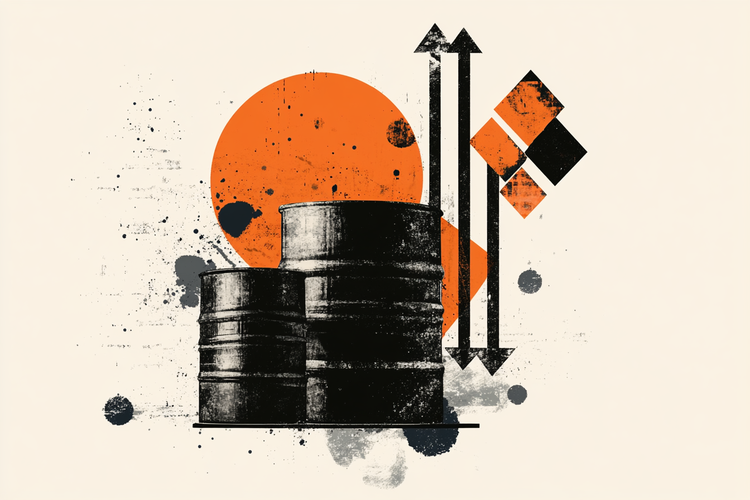- AUD/USD saw further decline on Thursday, landing at 0.6550, returning to the status of being the worst performing currency in the G10.
- Lingering concerns over the health of the Chinese economy and the AUD’s ‘high risk’ status continue to add pressure on the AUD.
- A weakening Australian economic outlook could prompt the RBA to reconsider its hawkish stance.
In Thursday’s session, the Australian Dollar (AUD) intensified losses against the USD, with AUD/USD falling near 0.6550 on the back of multiple headwinds. Continued weakness in China’s economy coupled with depreciating iron ore prices are the main contributors to the AUD’s decline.
Despite flashes of vulnerability in the Australian economy, the Reserve Bank of Australia (RBA) continues to resist rate cuts due to persistently high inflation. This stance could potentially hinder further depreciation of the AUD. The RBA is set to be one of the last central banks among those in the G10 to implement rate cuts, which could eventually limit AUD losses.
Daily Market Wrap: Australian Dollar’s slide continues amid alarming economic indicators in China and Australia
- In a ‘risk-off’ mood, the AUD saw a sharp sell-off, mainly influenced by market concerns over the Chinese economy and the Australian Dollar’s conspicuous position as the G10’s ‘high-risk’ currency.
- Earlier this week, the People’s Bank of China (PBoC) decided to cut rates, sparking fears about the health of the world’s second-largest economy, which happens to be Australia’s largest trading partner.
- Industrial metals prices were also under pressure due to fears of weak Chinese demand.
- The Reserve Bank of Australia (RBA) remains hawkish and shows no signs of easing its stance, with markets betting on a hike in the fourth quarter.
AUD/USD Technical Analysis: Bearish outlook strengthens with pair now below major SMAs
AUD/USD moving below the 20-, 100- and 200-day simple moving average (SMA) represents an area of increased concern, suggesting that downtrends may extend further.
The AUD/USD is experiencing a significant nine-day losing streak, losing almost 3.50% in July and indicators are drastically negative, but its oversold nature with the RSI near 30 could trigger a corrective response.
The Australian Dollar
One of the most important factors for the Australian Dollar (AUD) is the level of interest rates set by the Reserve Bank of Australia (RBA). Since Australia is a resource-rich country, another key factor is the price of its largest export, iron ore. The health of the Chinese economy, its largest trading partner, is a factor, as is inflation in Australia, its growth rate and the Trade Balance. Market sentiment, i.e. whether investors are betting on riskier assets (risk-on) or seeking safe havens (risk-off), is also a factor, with risk-on being positive for the AUD.
The Reserve Bank of Australia (RBA) influences the Australian Dollar (AUD) by setting the level of interest rates that Australian banks can lend to each other. This influences the level of interest rates in the economy as a whole. The RBA’s main objective is to maintain a stable inflation rate of 2%-3% by adjusting interest rates up or down. Relatively high interest rates compared to other major central banks support the AUD, and the opposite for relatively low ones. The RBA can also use quantitative easing and tightening to influence credit conditions, with the former being negative for the AUD and the latter positive for the AUD.
China is Australia’s largest trading partner, so the health of the Chinese economy greatly influences the value of the Australian Dollar (AUD). When the Chinese economy is doing well, it buys more raw materials, goods and services from Australia, which increases demand for the AUD and drives up its value. The opposite occurs when the Chinese economy is not growing as fast as expected. Therefore, positive or negative surprises in Chinese growth data often have a direct impact on the Australian Dollar.
Iron ore is Australia’s largest export, worth $118 billion per year as of 2021 data, with China being its main destination. The price of iron ore can therefore be a driver of the Australian dollar. Typically, if the price of iron ore rises, the AUD rises as well, as aggregate demand for the currency increases. The opposite occurs when the price of iron ore falls. Higher iron ore prices also tend to lead to a higher probability of a positive trade balance for Australia, which is also positive for the AUD.
The trade balance, which is the difference between what a country earns from its exports and what it pays for its imports, is another factor that can influence the value of the Australian dollar. If Australia produces highly sought-after exports, its currency will gain value solely because of the excess demand created by foreign buyers wanting to purchase its exports versus what it spends on buying imports. Therefore, a positive net trade balance strengthens the AUD, with the opposite effect if the trade balance is negative.
Source: Fx Street
I am Joshua Winder, a senior-level journalist and editor at World Stock Market. I specialize in covering news related to the stock market and economic trends. With more than 8 years of experience in this field, I have become an expert in financial reporting.





